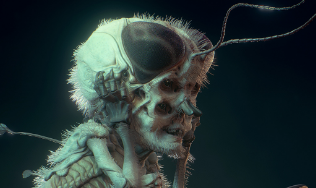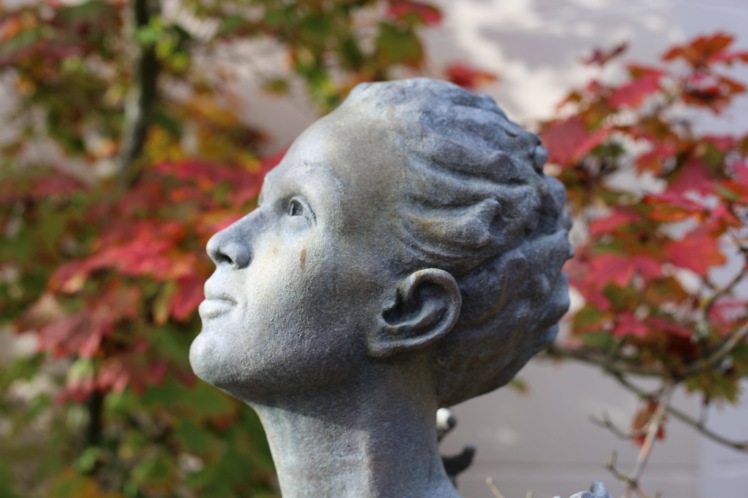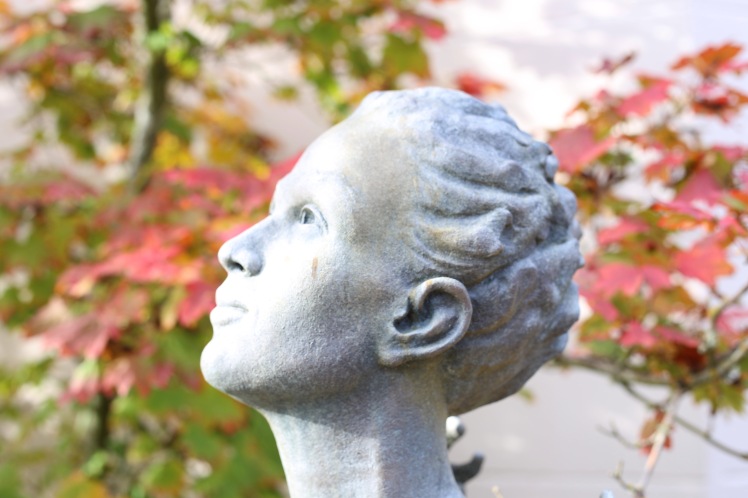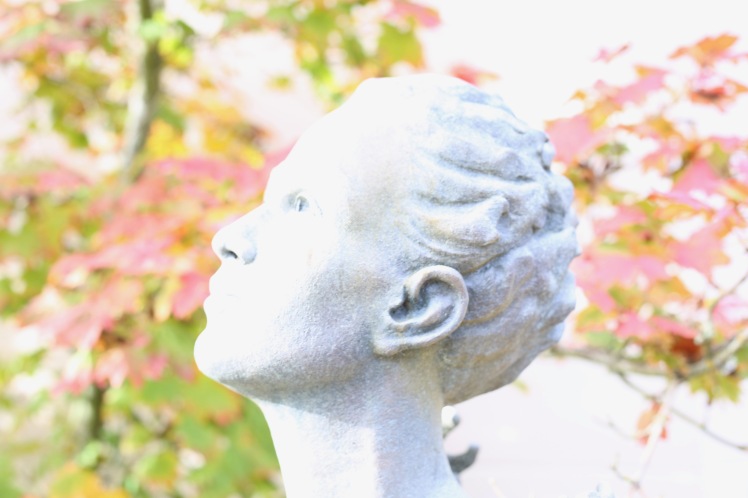I wanted to create a story with elements that can be reused. Video games are an escape from reality. Reality has it’s limits, for instance humans can’t fly yet. This story explores the reaches that imagination can attain, as you can in video games. I made it so the first half of this story of being in a room so that it can be used as an environment which you can start from. A lot of video games are played in a dark room, so I wanted to emulate that. From that dark room you are able to traverse to wherever you want this character to go to. From a bored room, anyone is able to teleport to their imagination’s desires. I personally chose chiptune music with 80’s sound effects and the feeling of riding a unicorn. You are able to go anywhere with your imagination and that’s the point of this song.
Category Archives: FALL 2016
Forest of Whispers Recovered Audio
For my Intro to Media Arts audio project, I decided on doing a fake “found recording” inspired on a game I am currently developing. In the audio, an unnamed man records what turns out to be his last words to whoever finds the discarded recording device. The recording ends with the man being attacked by something monstrous as the recording cuts out. Working on this project I gained new insight on how to record and edit sound files in the Audacity sound program I was working in. I wanted the audio for the project to have the feel of an old audio recording like a record. I accomplished this by adding an equalization effect, changing the “curve” which gave me a list of possible curves to use . For example, I applied a “Telephone Curve” Equalization effect to the audio I recorded which gave it the feel that I wanted it to have. Recording my audio proved to be a bit more difficult than I originally thought, I recorded all my own dialogue which I had written down beforehand and I had problems trying to project the right tone for the clip as well as pronunciate what I say correctly without garbling my words. It took a while to finally get into it, but when I did things moved more smoothly. This assignment has taught me much in terms of working with audio which I hope to apply to my work as a a film and game developer.
Audio Project: Ode to the Cat
I found Pablo Neruda’s poem to be amusing, and wanted to convey a lighthearted feel. As a person who has known many cats, his words ring true. I can picture the poet late at night, paper and pencil scratching away, as his cat watches with a look that is 1/3 bored indifference, 1/3 condescending judgement, and 1/3 wishing Pablo would just pet him already.
The first challenge was recording. Getting consistent audio feel, pacing and volume while trying to give emphasis to the poetry reading took lots of practicing and re-recording. I still question if my voice has the right feel to it.
The next challenge was picking a background music track. I wanted to find some acoustic Spanish guitar to accompany it. However, all the tracks I tried were too distracting for the background. I finally decided to try audio of a cat purring. I feel it gives it a warm feel, like somebody is contemplating the cat’s existence while petting a cat on their lap. That’s how I will now imagine Pablo spending his quiet moments when he wasn’t writing or wooing women.
Learning to use Audacity was pretty intuitive. It seems like a really effective program for a variety of audio needs, and I’ll be using it for future projects.
How mindful meditation affects our brain
Better focus
Because meditation is a practice in focusing our attention and being aware of when it drifts, this actually improves our focus when we’re not meditating, as well. It’s a lasting effect that comes from regular meditation practice.
Less anxiety
The more we meditate, the less anxiety we have, this happens because we’re actually loosening the connections of particular neural pathways in Me Center (medial prefrontal cortex). This is the part of the brain that processes information relating to ourselves and our experiences. Normally the neural pathways from the bodily sensation and fear centers of the brain to the Me Center are really strong. When we experience a scary or upsetting sensation, it triggers a strong reaction in our Me Center, making us feel scared and under attack.
When we meditate, we weaken the neural connections. This means that we don’t react as strongly to sensations that might have once. As we weaken this connection, we strengthen the connection between what’s known as our Assessment Center (the part of our brains known for reasoning) and our bodily sensation and fear centers. So when we experience scary or upsetting sensations, we can more easily look at them rationally.
Better memory
One of the things meditation has been linked to, is improving rapid memory recall. Researchers found that people who practiced mindful meditation were able to adjust the brain waves that screens out distractions and increase their productivity more quickly that those that did not meditate.
Less stress
Mindful meditation has been shown to help people perform under more pressure while feeling less stressed. At 2012 scientists split a group of HR managers into three sub-groups, which one third participated in mindful meditation training, another third took body relaxation training and the last third were given no training at all. A stressful multitasking test was given to all the managers before and after the eight-week training. In the final test, the group that had participated in the mindful meditation training reported less stress during the test than both of the other groups.
More gray matter formation
Meditation has been linked to larger amounts of gray matter formation in the hippocampus and frontal areas of the brain. What does it mean: more gray matter can lead to more positive emotions, longer-lasting emotional stability and heightened focus during daily life.
Meditation has also been shown to diminish age-related effects on gray matter and reduce the decline of our cognitive functioning.
Save the turrets, stop the abuse.
Well, as nervous as I was about this I am really happy with the final product. For the first time using audacity I think I did pretty well and had a blast doing it. I wanted to show an average day in the lab at Aperture science and what these poor poor turrets have to go though. So I made my audio clip to raise awareness so that someday the turrets will be free like you and me. I had so much fun doing different voices and messing with the pitch and bass. I even got to create a slight echo that helped me get the voice I wanted. It took around 8 hours and many re-recordings to get the final product. Getting each voice recording to sound the same was the most difficult for me. If I were to do this again I would do all my lines for a certain character first then the second character and so on. But it was a good learning experience struggling through so all’s well that ends well. My other problem I discovered is if you don’t know the game you wont understand some of the humor. The overall point of saving the turrets was made but the humor I attempted to incorporate may be lost to some viewers. But regardless I genuinely hope you enjoy the short clip and remember, save the turrets, stop the abuse.
–George Bleekman
Soothing Stories
My goal with this assignment was to gain some familiarity with Audacity. Up to this point, any work I’ve done with audio has been done inside of Adobe Premiere Pro. While I think I still prefer Premiere for my purposes, if I were to have a project where I needed a large number of layers going at the same time, Audacity would be a good option. It’s also important to note that Audacity is free whereas Premiere is not.
I’ve also done no work in the past with adding in sound effects to my work so this was a good opportunity to play with timing and levels of those sounds to make sure that they fit in well with the main audio and didn’t overpower it. The only “sound effect” I’ve used has been “bleeps” over the occasional swear word.
Most of the work I have done up to this point has been simply syncing multiple audio tracks to the same video and finding which has the best sound at different points to be sure that the viewer has the best opportunity to hear the specific things that I want them to.
My biggest regret with this project was that I was unable to find an appropriate place to insert a Wilhelm Scream. The Wilhelm Scream seems to be a staple for any audio engineer or Foley artist. It is estimated to appear in at least 225 movies and tv shows.
I don’t necessarily plan on being in a situation where I have to use Audacity again in the future however should I find myself in that scenario, I will feel much better prepared for it.
by: Ryan Miller
Death’s Reign – Introduction
Death’s Reign, The World Left Behind, is a 5th Edition Dungeons & Dragons Campaign Setting created by me, Alexander Driskill. This audio story is the introduction section written for the current conceptual draft.
The Audio Story starts with an excerpt from a wanderer’s journal, explaining, in very few words, the history and state of the world. The echo effect is meant to emphasize some aetherial feeling of the words.
The story then moves to a gruff man speaking around the fire, telling whoever would listen about how the world “ended”. No music was used in order to emphasize the moment, before using a pause between this part and the next part to emphasize a transition.
As the music swells the story continues, introducing other sound elements, such as birds while talking about the jungle, marching while explaining The Mourning Light’s takeover of Dorado, and a simple magical effect when bringing up the use of magick.
When talking about the “Denizens of Neraida” a chanting sound is used when describing the elves as a way to help visualize the native-ness of their situation. A howl is used when talking about the beasts, and a sound effect of swords clinking against each other is used to simulate the sound of spider-like, metal legs clinking against stone or metal surfaces.
Puget Sound Hound Comedy
This track I created myself. the voices in this track want to remain anonymous. the back round music is from the class server track all about us 60’s. In the 60’s and the 70’s, blacks had it hard when it came to getting a job. A lot of people lived in poverty with no choice of there own. Hustles came in to play for the few that did not want to except being poor, so they did what they had to so they could live a good life. Pimpen is one of them. I don’t expect for a lot if you to understand, unless your born hated you wouldn’t but I grew up in this life style. this is a history listen sort of to all you how know nothing about black culture in a funny way to understand the struggle blacks had to indoor and still do.
Creature Spot Blog

If there is one thing i enjoy doing it is creating monsters and if you enjoy monsters as much as I do then you will enjoy the blog Creature spot .com. On this blog people from all over post their concepts and ideas for monsters of all shapes and sizes. Monsters from hand drawn and colored with colored pencil to full 3d models and sculpts. These monsters range from cute and lovable to large and grotesque that are good candidates for a good monster movie. Some of these creepy creatures were used in film and movies like the 7000 chemicals commercial which was made to send the message of don’t smoke. It featured nasty human like monsters that are covered in a tar like substance and smoke coming from their backs to represent cigarets .
My opinion on the website itself is very positive it has a easy to navigate layout with a good index and a sidebar to show who has contributed to the website. The website does have a active comments section for people to leave their comments. The creator has a link to his Facebook where you can contact him if you have any questions for him. So I highly recommend this blog its a very creative and well put together site.



